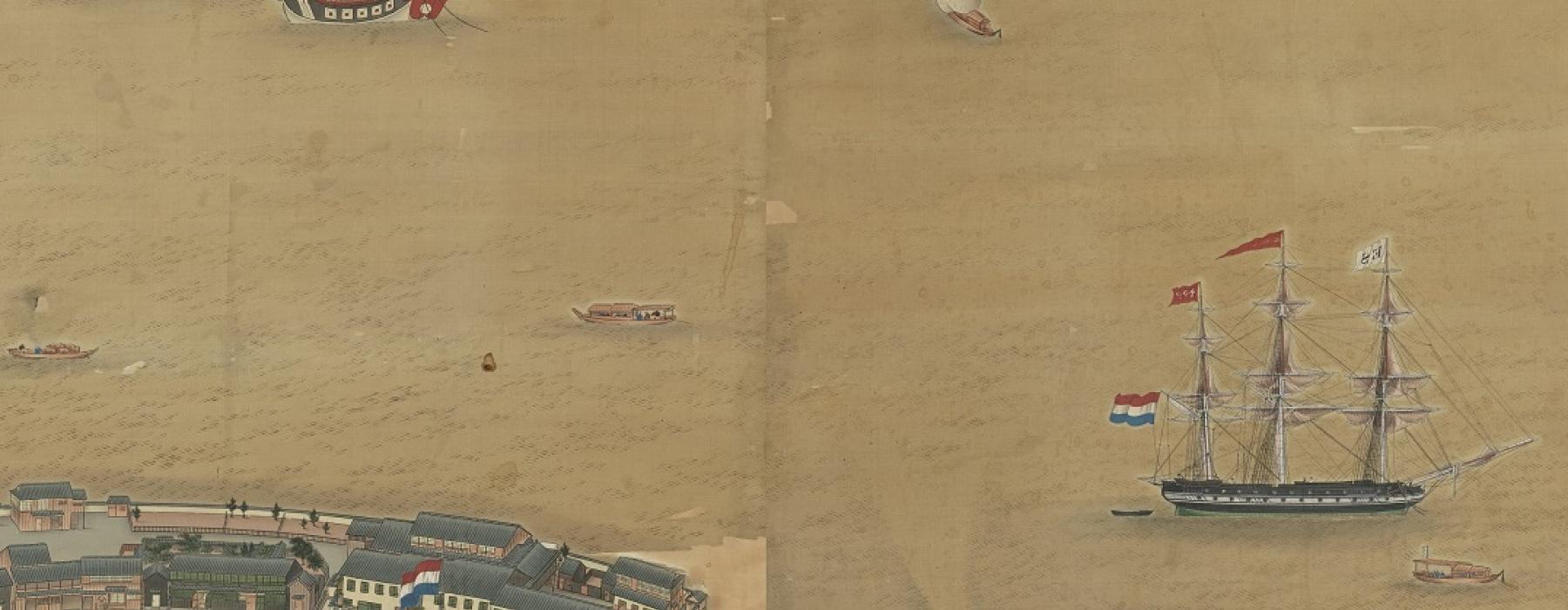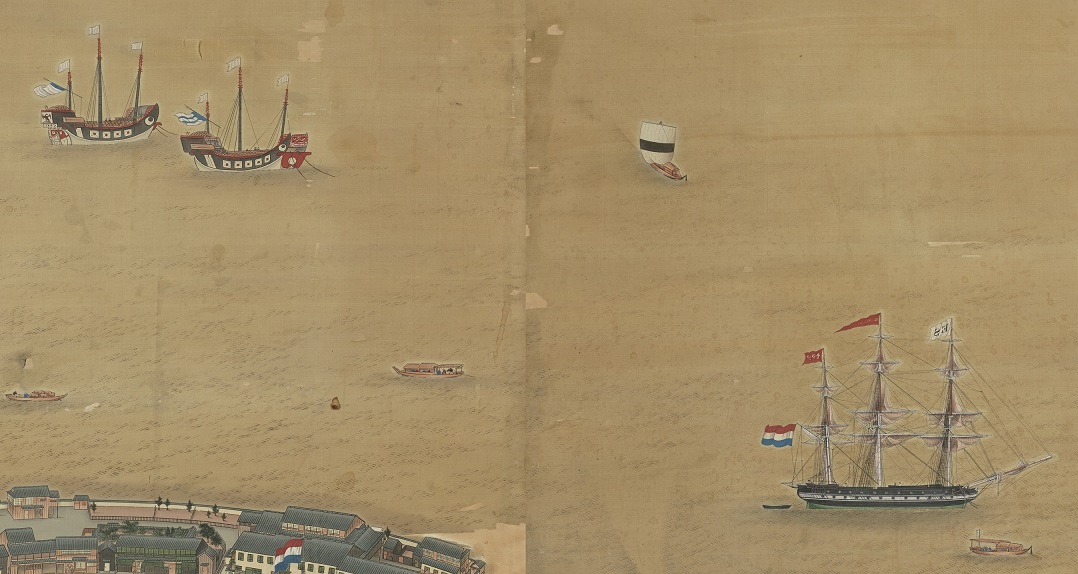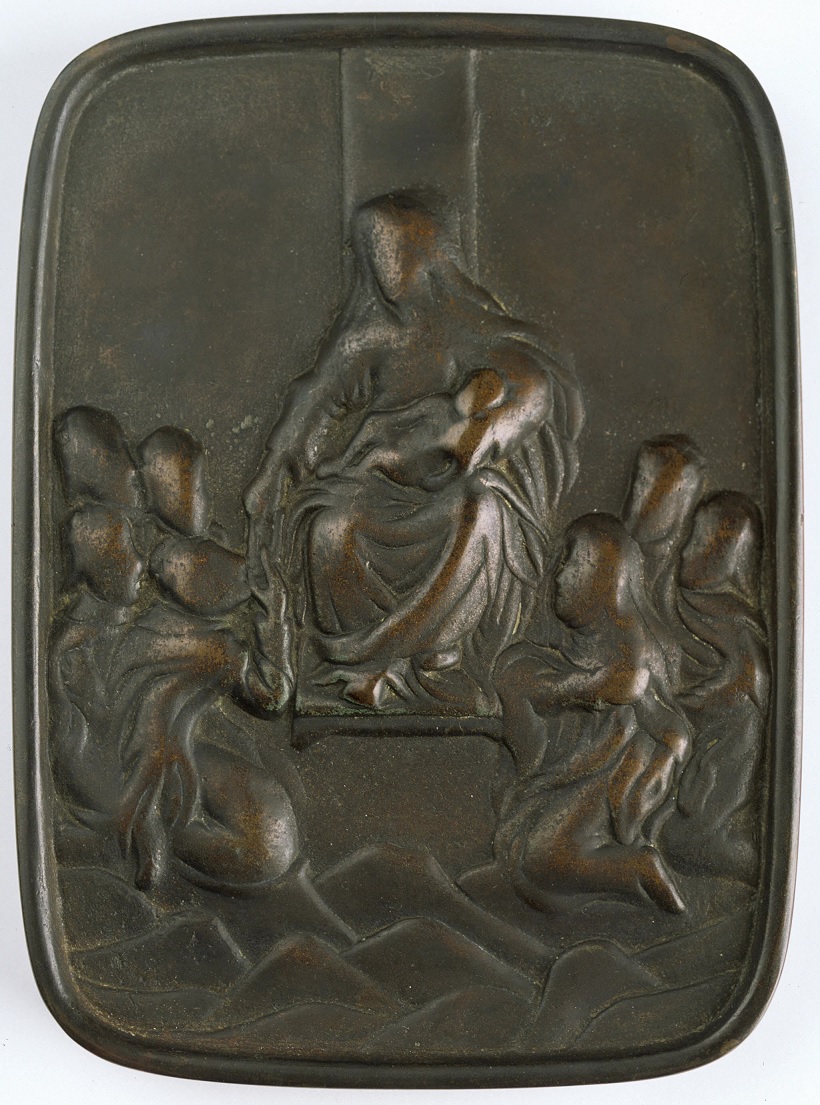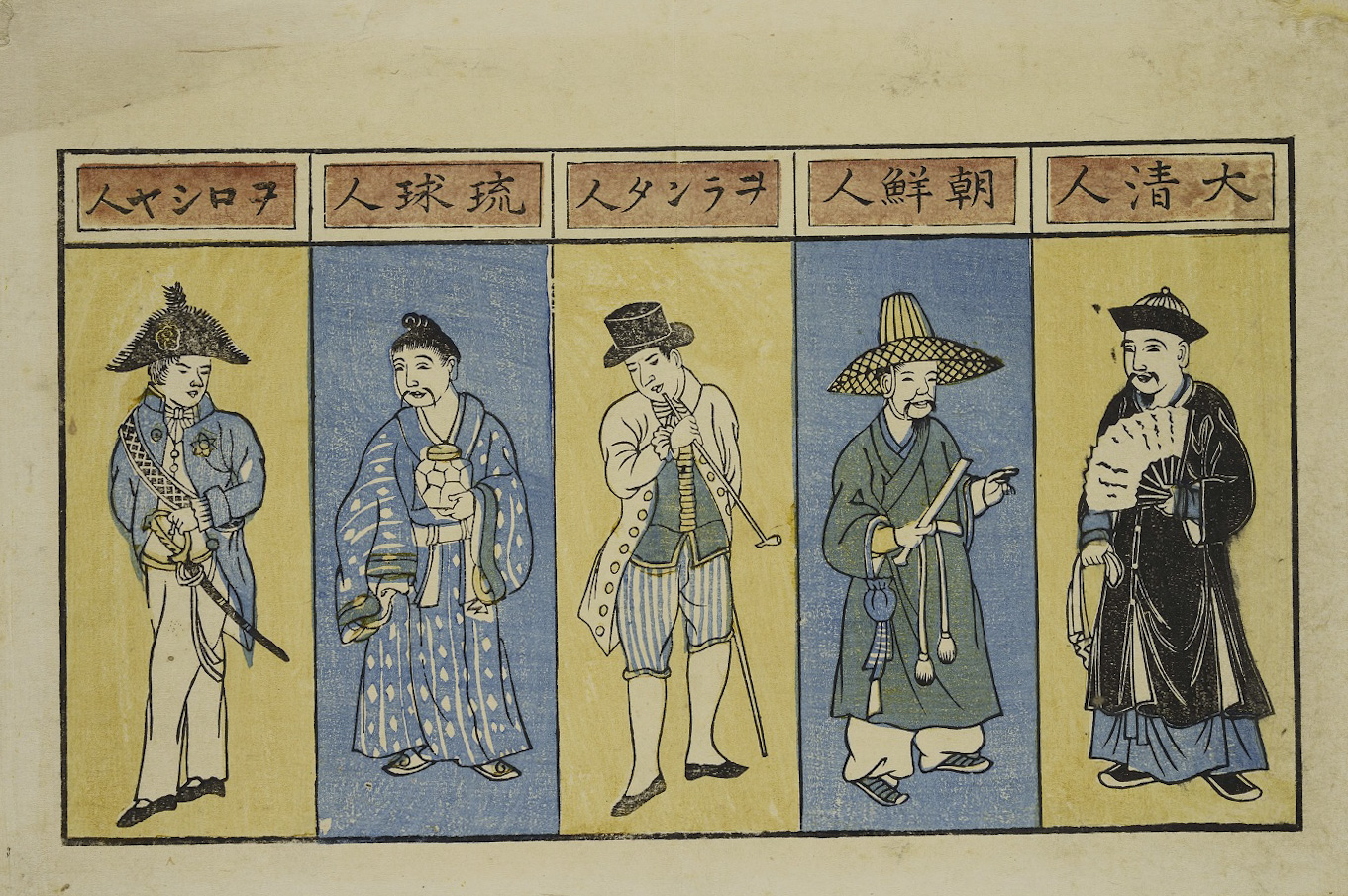
A Dutch ship lays prominently at anchor situated to the right of the Dutch trading post Deshima. A bit further away, straight across from Deshima, two Chinese trading vessels can be discerned. Yet compared to other major international port cities of the time, such as London, Canton (now Guangzhou), Amsterdam, and Antwerp, the presence of foreign ships was minimal. Though small in number, the ‘abundance’ of foreign ships was an extraordinary sight for Japanese standards. The reason for this is that Japan for the greater part of the Edo-period (1600 – 1868) maintained a policy of isolation, which greatly restricted foreign trade. Nagasaki was one of the few exceptions during this period. In this city foreign trade was allowed, albeit under heavy restrictions and regulations.


